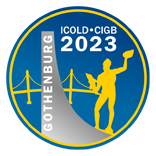The topic of dam safety management can cover a broad field of aspects and according to the ICOLD bulletin 154 the system should:
“establish a systematic and consistent way of transforming an operating organization’s values, principles, policies and procedures into the products or outputs of industrial or commercial activities”
Sub-activities that could be part of the systematic work commonly starts with a set of policies and objectives followed by planning of activities and resource allocation to achieve the objectives when implemented. A crucial, but complicated, objective is to define what a tolerable risk level is. Sometimes the end result could be to apply the principle to reduce risks as low as reasonably practicable (ALARP).
To be able to evaluate if the dam safety management system maintain operation in line with its defined objectives, monitoring and evaluation is needed. Utilization of the information collected in monitoring and evaluation should be used for audits and review, preferably by independent reviewers. Finally the outcome of monitoring, evaluation, audits and reviews should be used for tuning and updating the dam safety management system in continuous improvements.
Not only the owners, board of directors, CEOs and other executives, competent and commited as well as dam safety employees are part of the dam safety management. Also the investors could have an important role to influence or form requirements on the governance and safety management to initiate cooperation.


 Papers and presentations during the symposium will cover six themes (T1-T6) for dams with various purposes such as hydropower, flood control, irrigation, levees and other consumptive uses as well as mine tailings.
Papers and presentations during the symposium will cover six themes (T1-T6) for dams with various purposes such as hydropower, flood control, irrigation, levees and other consumptive uses as well as mine tailings.


